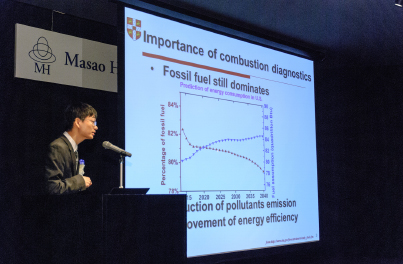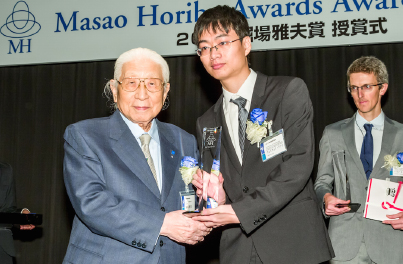

Nonlinear tomography: a new imaging theory for combustion diagnostics
Dept. of Chemical Engineering, University
*The organization and the title are those when awarded
Abstract
- 日本語
- English
"Tomography" is a technique for obtaining internal information of the target to be measured. Its application to gas concentration measurement will aid in determining the spatial distributions of gas concentrations in combustion diagnostics. However, the classical tomography can only be applied to the situation where pressure is constant and uniform cross the flow field. Also, only one component can be obtained with limited sensitivity due to the inherent limitations with classical tomography. The combination of the newly proposed concept "Nonlinear Tomography" with the latest laser gas measuring techniques will enable the simultaneous spatial distribution analysis of the multiple parameters including temperature, pressure, and concentration of several gas components. This will facilitate the study of new combustion concepts and engine designs.
Research summary
"Tomography" is a technique for obtaining internal information of the target to be measured, for example, CT scans on a patient in a hospital. Application of tomography to gas concentration measurement will aid in determining the spatial distributions of gas concentrations. However, there is a deviation between the real distribution and that obtained by "normal" tomography, this is because the latter is obtained on the condition that other parameters such as pressure is held constant. Also, only one component can be obtained with limited sensitivity because of the limited available measurement techniques.
Dr. Cai suggested combining "nonlinear tomography" with the latest laser gas measuring techniques to enable the simultaneous spatial distribution analysis of the multiple parameters including temperature, pressure, and concentration of several gas components. This will provide a complete picture of gas concentration distributions with high sensitivity.
By using this technique, in a rapidly changing, inhomogeneous environment, such as found within an engine, the distribution of temperature, pressure, and gas concentration of trace components will be measureable. Such a tool will bring great benefit to the combustion industry such as automotive industry.



